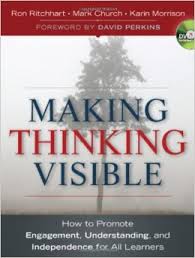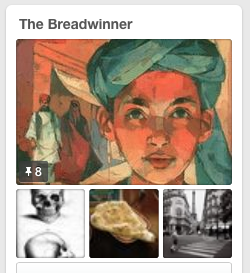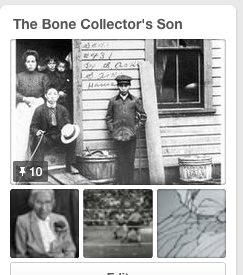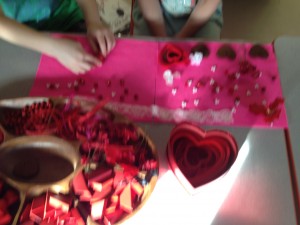Below is the link to my website about my inquiry project. My inquiry project is about the Reggio Emilia approach which many kindergarten teachers and early childhood educators find inspiring. I am inspired by the approach myself and I am curious about ways that the Reggio Emilia Approach can be applied to intermediate classroom.
Monthly Archives: February 2015
“You Can Do Anything!” – Reggio Inspired Story Workshop
“Are you going to write your story now?”
I had the opportunity to observe “Story Time Workshop” in kindergarten and grade 1. Story Time Workshop is a reggio inspired literacy approach. Something that is really influential to me is the poem “The Hundred Languages of Children” by Loris Malaguzzi. I believe that if you are listening to their voices close enough you can hear all one hundred of children’s languages (and maybe 100 more!). The story time workshop is about encouraging children to tell their own story in a way that honours their language of play.
The basic methodology to my understanding:
The children play with an assortment of materials, they have choice as to which materials they would like to use and all materials are set up in a way that is aesthetically beautiful and inviting. Some materials available today:
- paint in analogous colours
- wooden blocks interspersed with branches
- thematic loose parts and materials for valentines day
- clay and dough with accompanying tools
- sheets and lights for shadow projections and sand with loose parts
The children use their materials to represent their stories through play. They discuss with each other and they create. Once they feel that they are ready or “done” they are encouraged to write their story. They grab their clipboard and start recording their stories. After this, they may return to the materials to to further represent their stories. Throughout this process the teacher is documenting through a variety of mediums (like video or photograph). The act of documentation in itself shows students the teacher is listening.
The students in this class are really engaged in the workshop. They love to write their stories… I think because they are given ample time to play and represent their thinking. I had similar results with successful writing when I waited until towards the end of my pumpkin investigation to do a writing activity.
Even the youngest K’s in the group understand the story workshop. I was playing with some loose parts with some of the children. I must have slowed down because a little one looked at me and said “Are you going to write your story now?”. With that prompt… I got right to work! She understood the framework and held me to that same standard for creative play and story writing.
Overall it was a wonderful experience. The atmosphere of the room is different from a traditional classroom. I was particularly intrigued by something one little girl said to me. I had sat down, grabbed some beads and said “I wonder if I can make a pattern?”. The girl said to me with conviction “You can do anything!”.
Wether she meant that she had full faith in my abilities or she meant that I had choice in what I wanted to do… I’m still not sure. However one message is clear, the environment in a reggio inspired program views students as powerful and rich, they can do anything.
District Intensive Literacy Class
This morning I observed a late literacy classroom in Surrey. Wow! What a great environment. I was thoroughly impressed with the strong classroom community.
What really stood out to me was how the students in the class supported each other and how motivated the students were. What I observed was a real growth mindset – this was evident even from just looking at the physical space of the classroom. Students had their goals posted on the walls as reminders to them about what they were working towards. These goals included short term goals like “Become a Better Reader” and long term goals like “Go Travelling to Other Countries”.
The physical set up of the classroom was also great. Lots of alternative seating for the students, attention to lighting, snacks available, attention to colour choice etc. The teacher had very carefully and purposefully created her classroom environment. I think I was extra sensitive to this in my observation of her room because of my interest in the Reggio approach. The environment is considered the third teacher in Reggio. The physical space was calm, accommodating and “unfussy”- much like the teacher herself.
I really loved the classroom motto- “No Stress”. The students, teacher and EA in this room were all lovely.
Making Thinking Visible with Ron Ritchhart

In January I went to a workshop with my school advisor, a workshop presented by Ron Ritchhart who is a researcher with Harvard’s Project Zero. It was excellent and I can’t wait for part II. Before the workshop and over the winter break I read his book “Making Thinking Visible”. I found it very interesting, I especially liked some of the “thinking routines” so I was really looking forward to hearing him speak.
Something that really influenced me from this book were the reflections of the second author Mark Church- he mentioned that early in his career he overemphasized “fun” and planned activities that were “hands on”, but not minds on. The example he gave was playing a game of jeopardy with his class to prepare for a test. This is a “palatable form of practice” but it doesn’t challenge students to think about the material in a meaningful way.
I think the work being done by the researchers at Project Zero is extremely influential for the field because it gives purpose to the idea of inquiry and project based learning. If we truly commit ourselves to wondering and asking questions then it is only inevitable we find out we have more questions than we started with. I view that as a positive thing. That is true learning. Questions reflect the depth of our understanding and asking questions is an authentic place to root learning.
I want to create a culture in my classroom where it’s okay to get the wrong answer, an unexpected answer, or even no answer at all. The most important thing is that you ask the question. I remember saying this when I did the pumpkin investigation in kindergarten. It’s still as real to me as ever going through science fair with my grade five students. I want it to be all about the process.
I want it to be learning and not work.
Voices from my classroom…
What we wonder about…
Why are we not immortal?
Is the science fair good or bad?
What’s so great about bacon?
What is the brain?
What is the reason people can’t sleep?
What is colour?
Why is orange called orange and not yellow?
Will the sun ever die?
How did humans find out about electricity?
Why do people like sweet things?
Why humans need hair?
Why do we have money?
How do people sneeze?
Is there life on another planet?
Why am I Canadian?
More updates on science fair coming soon:
Novel study and Literature Circles
Still experimenting with pinterest as a tool for my own learning… My best advice so far is to use the comment section to include your own thoughts and writing which I have done on almost all my boards. When you are pinning something take a few seconds to erase whatever comment or caption that pre-exists and put in your own thoughts about the image. This adds your voice to the conversation.

I arranged two pin boards about novels that I studied with my literature circle group. I collected a variety of images that I thought accompanied what I had read in the novels. Then I added quotations and my own thoughts to the caption boxes. The product I’m left with is a very visual and thorough representation of my learning.
Professor Filipenko asked me to share this method with the class today.
I’m trying to think of ways I can use this method with my students… I would love for each student to be able to do this… I think pinterest could potentially be a very powerful tool for learning but I have to think carefully about privacy, policy, and terms of use. (The woes of being in the first wave of teachers to be true digital natives).
 I would recommend The Breadwinner for Grades 5-8 and The Bone Collector’s Son for Grades 7-9. Both books are excellent (and I found many text-to-text connections between the two!).
I would recommend The Breadwinner for Grades 5-8 and The Bone Collector’s Son for Grades 7-9. Both books are excellent (and I found many text-to-text connections between the two!).
